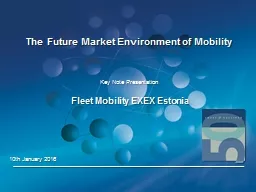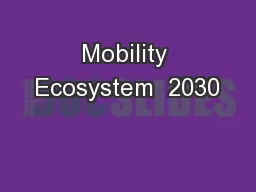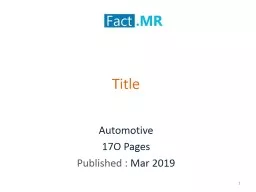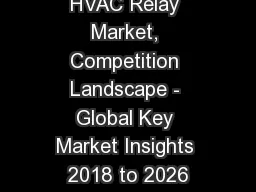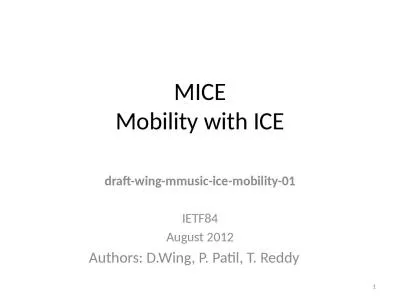PPT-The Future Market Environment of Mobility
Author : danika-pritchard | Published Date : 2018-01-16
Key Note Presentation Fleet Mobility EXEX Estonia 10th January 2016 Todays Agenda Source Frost amp Sullivan Agenda Introduction Transformational Shifts Reshaping
Presentation Embed Code
Download Presentation
Download Presentation The PPT/PDF document "The Future Market Environment of Mobilit..." is the property of its rightful owner. Permission is granted to download and print the materials on this website for personal, non-commercial use only, and to display it on your personal computer provided you do not modify the materials and that you retain all copyright notices contained in the materials. By downloading content from our website, you accept the terms of this agreement.
The Future Market Environment of Mobility: Transcript
Download Rules Of Document
"The Future Market Environment of Mobility"The content belongs to its owner. You may download and print it for personal use, without modification, and keep all copyright notices. By downloading, you agree to these terms.
Related Documents

